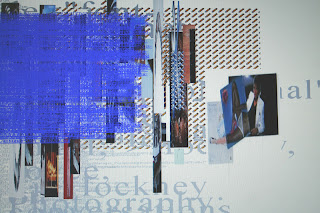At the end of the first episode and chapter of Robert Hughes’ Shock of the New, we are told that “The Mechanical Paradise” that modernism promised “would soon be less evident. After 1914”, Hughes explains “machinery was turned on its inventors and their children. After forty years of continuous peace in Europe, the worst war in history cancelled the faith in good technology, the benevolent machine. The myth of the Future went into shock and European art moved into its years of irony, disgust and protest (Hughes, 1991 p.56).
The second episode “The powers that be” opens at the site of the Butte de Walencourt above the Somme Valley. In these places, Hughes explains, “our fathers and grandfathers tasted the first terrors of the 20th Century. There that joyful sense of the promise of modernity, the optimism born of the machine and of the millennial turning point of the new century, was cut down by other machines” (Hughes, 1991 p.57).
Art and language Hughes argues “could no longer carry its former meanings. World War I changed the life of words and images in art, radically and forever. It brought our culture into the age of mass-produced, industrialized death. This, at first, was indescribable” (p.56). Total war until this time was basically beyond human experience and the naivety in which Europe entered the conflict was reflected in the propaganda that basically described the experience as somewhere between a joust and a cricket match. More profound was the gap between experience and official language. Those who had experienced grew aware that their leaders: the generals and politicians had lied about the war, its causes, its nature and length and the press had described very little of the realities of the conflict. A whole generation would be lost and traumatised. It was up to the artists and poets to challenge this official language and what separated them from official culture, was that that culture belonged to the elders. Some artists rejected authority and nationalism and the patriotism of their fathers. The children would become pacifists and internationalists and would seek a way out of the madness of the Great War and seek out exile. The main haven for intellectuals in Europe was Zurich in neutral Switzerland.
The café was the natural home of the exiles and a very potent public sphere where many cultural, revolutionary and political ideas formed. In Zurich’s Café Odéon we saw Lenin plan that violent revolution in Russia, it was also the place where Cabaret Voltaire and Dada was born. From here the revolutionary nature of art is explored from dada in Berlin to the constructivists in St Petersburg and Moscow. Of course both revolutionary art movements are doomed to fail as Stalinism and Nazism took hold and dismissed such things as degenerate or bourgeois and punished those artists who practised it with humiliation, exile, imprisonment or death. The idea of a revolutionary art linked to modernism does not disappear and certainly is not all liberal or left-wing. Futurism was all patriotism and warmongering before and after World War I and became quite influential on the young Mussolini as he shifted his politics from socialism to something else. Not long after he came to power Mussolini made futurism fascism’s first official style. Was there a difference, Hughes asks at one point, between Russian Agitprop art and photo-montage, cubo-futurism and futurists use of the same techniques? That other dictator, Hitler generally rejected modernism was favoured classicism and the work of Albert Speer. In the 1930s Mussolini would adopt classicism under Speer’s influence.
Hughes compares Mussolini’s use of classicism and his architecture of state power with the “Architecture of Democracy”, with the scariest example being Albany Mall, the government building of New York State. We have no architecture of freewill, Hughes declares! As for the art of descent, we are left with Picasso’s Guernica and the remnants of the Dadaist strategies in the neo-dada of Jean Tinguely whom Hughes seems to dismiss as rather tame an un-revolutionary: harmless. Art then is out done by mass media and photography in their ability to morally influence the world: “it is hard to think of any work of art of which one can say, This saved the life of one Jew, one Vietnamese, one Cambodian. Specific books perhaps; but as far as one can tell, no paintings or sculptures. The difference between us and the artists of the 1920s is that they thought such a work of art could be made. Perhaps it was a certain naiveté that made them think so. But it is certainly our loss that we cannot” (Hughes, 1991 p.111).
Sources:
Hughes. R, (1991) The Shock of the New London: Thames and Hudson.
























